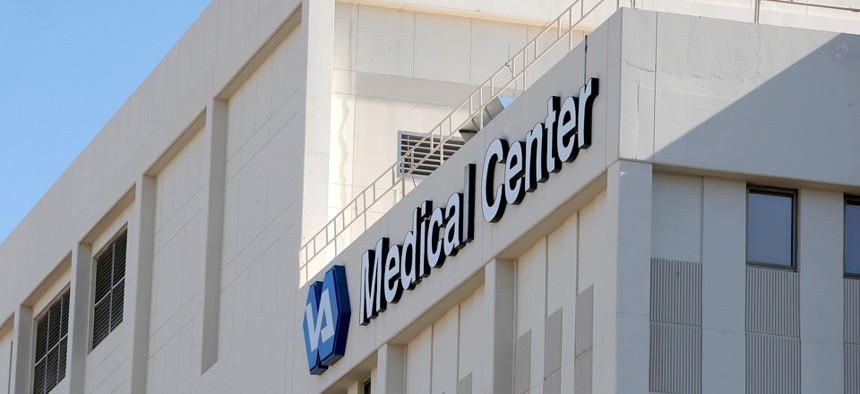VA’s Convoluted Patient Scheduling Starts with a ‘Helpline’ Call

Ross D. Franklin/AP
Data collected on one computer was printed out for re-entry into another system, often months later.
Veterans trying to schedule medical appointments in the Veterans Affairs Department’s Phoenix Health Care System entered a Kafkaesque world where they had to call a “helpline” to provide demographic information to an official who would type the data into a computer and then take a screenshot and send it to a printer in another department. Those printouts would languish for an average of 115 days before personnel in that department would then re-enter the data into an electronic scheduling system. At that point, months after a veteran first called for an appointment, VA’s misleading record-keeping system would officially start the clock to measure the number of days patients had to wait to see a doctor.
That bureaucratic process, in place from February 2013 through March 2014, is detailed in the VA Inspector General’s interim report on systemic problems with patient scheduling throughout the Veterans Health Administration.
The Phoenix hospitals and clinics didn’t install electronic wait list software until 2012 to help manage appointments.
According to the IG, “HAS personnel told us there were often delays and backlogs in adding the veterans from the printouts to the [electronic wait list]. In addition, HAS personnel said they held the printouts for a 1-2 month period during the beginning of this process before adding them to the EWL.”
Personnel in Phoenix told the IG they destroyed the screenshot paper printouts after they scheduled an appointment, placed the veteran on the electronic wait list, or determined he or she was not a new patient. “Because of this, we could not identify these veterans or confirm that they were ever provided an appointment,” the IG reported.
In March, Health Administration Service personnel began creating PDF documents from the screen shots and transferring the data electronically to personnel who then transfer it into the electronic scheduling system. That hasn’t expedited the process, the IG reported. “We obtained PDF screen prints from March 24 through April 25, 2014, and identified about 400 veterans who were waiting for an appointment and were not on the [electronic wait list],” the IG said.
The IG identified 1,700 veterans waiting for a primary care appointment in Phoenix who were not on the wait list. “Until that happens, the reported wait time for these veterans has not started. Most importantly, these veterans were and continue to be at risk of being forgotten or lost in Phoenix HCS’s convoluted scheduling process.”
The IG recommended VA Secretary Eric Shinseki identify those veterans at greatest risk from delayed care and “initiate a nationwide review of veterans on wait lists to ensure that veterans are seen in an appropriate time, given their clinical condition.”



